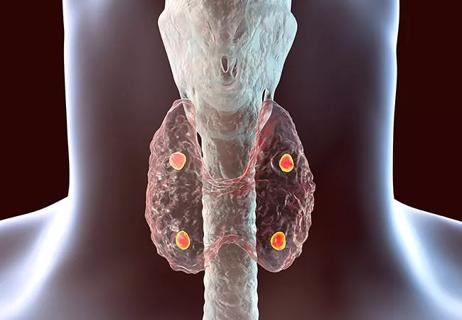A closer look at a recent study

By Kevin Pantalone, DO, ECNU, FACE
Advertisement
Cleveland Clinic is a non-profit academic medical center. Advertising on our site helps support our mission. We do not endorse non-Cleveland Clinic products or services. Policy
A new study reports that sodium-glucose cotransporter2 inhibitors (SGLT2i) appear to double the risk of amputation of a lower limb compared with other types of diabetes medications. Scandinavian researchers also found that patients on this specific class of diabetes medications had a doubled risk of diabetic ketoacidosis (DKA), the buildup of ketone acids in the blood that can be life-threatening.
This study is trying to address a very important clinical question. The adverse events associated with type 2 diabetes (T2D) therapies remain very hot topics of discussion in the medical community. It is important to remember, new or old, that all medications have both risks and benefits, and these must be addressed on a patient-by-patient basis.
A healthcare provider and the patient must decide on the best option for treatment only after a thorough discussion regarding the risks and benefits. There are numerous advantages reported in the literature regarding both of these newer classes of T2D therapies – SGLT2i and GLP-1RA (glucagon-like peptide-1 receptor agonists) – beyond simply improving glycemic control. Both cardiovascular event risk-reduction and kidney protection have been reported with these drug classes. However, these reported benefits need to be interpreted after taking into consideration their potential risks as well.
The present study is important, and it was very well designed. However, it is a hypothesis-generating study, not one that can establish causality. There are inherent limitations with these types of studies, with selection bias and residual confounding being two of the largest ones. The selection of therapy was not randomized. There may have been specific patient circumstances that led to one drug class being used in a particular patient vs. another. Also, there are many non-measured variables, which may also have influenced the observed results. Despite the authors great efforts to eliminate or reduce the influence of these issues on their study, they still remain.
Advertisement
It should be noted, that of the SGLT2i therapies studied in this report, only canagliflozin has raised concern in placebo-controlled clinical trials regarding an increased risk of amputations, where a twofold increase in amputation risk was observed, particularly in those patients with established cardiovascular disease. Ninety-nine percent of the patients included in this present study were treated with dapagliflozin or empagliflozin. In the cardiovascular outcome trials, where these two SGLT2i therapies were studied in randomized trials vs. placebo, there was no observed increase in amputations.
DKA has been an issue noted with SGLT2i therapy, particularly in patients where the therapy was being used off-label in DM-1 patients, insulin dependent DM-2 patients, and in patients with additional risk factors for DKA (i.e., alcohol intake, surgical procedures, noncompliance). The present study adds further evidence regarding the risk of DKA in some patients with SGLT2i therapy, highlighting the need to consider this risk when prescribing the medication to certain types of patients.
Overall, this study highlights that these are important issues that should be discussed between a patient and provider when deciding on which type of T2D therapy to utilize.
Dr. Pantalone is an endocrinologist and Director of Clinical Research for Cleveland Clinic’s Endocrinology & Metabolism Institute. He has the following industry relationships: Speaker Bureau, AstraZeneca, Merck, Novo Nordisk; Consultant, Novo Nordisk, Merck, Sanofi, Eli Lilly; Research Support, Novo Nordisk and Merck.
Advertisement
Advertisement

A weight-management program plus anti-obesity medication performs well

TRANSITION-T2D RCT results for patients with T2D receiving MDI

Incidence, outcomes and management

Cleveland Clinic endocrinologists work to identify protocols for improving care

Cleveland Clinic’s Endocrinology & Metabolism Institute is working to offer novel opportunities and therapies for diabetes and kidney disease

New findings indicate the importance of achieving sufficient sleep levels in regard to personal glucose targets

A recent study evaluates the correlation between preoperative calcium and parathyroid hormone values as predictors of gland volume and multi-gland disease

A look at how to asses hCG elevation